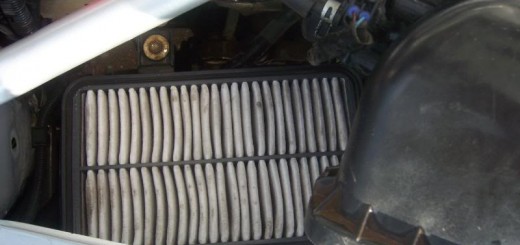Disclaimer: Altering or removing any part of a manufacturer’s installed emissions system is against Federal Emissions Laws in the United States. Those members who choose to do this agree they are doing it of their own violation, will not hold Spyderchat.com liable, and agree to use their vehicle for “off-road use only”. – Don In my line of work, it pays to be meticulous and only the paranoid survive. After reading the threads out there, I realized that my ’01 was at risk for an engine failure due to the pre-cat placement in the header. I could hope for the best, hope it failed under warranty, or eliminate the problem. I elected to gut the pre-cats.
I used Grant’s procedure as outlined here:
http://midshiprun.wpengine.com/mk3/precat-removal/
In addition to his list of needed items, I found it helpful to have:
A torque wrench rated from 20-150 ft-lbs
A full assortment of ratchets, various 10, 12 and 14mm spanners
Craftsman 10, 12, and 14mm sockets both shallow and deep
An air compressor
A power drill
Box of sandwich bags, masking tape, and a pen
Tube of anti-seize bolt treatment
Can of WD-40
Can of Boeshield T-9
Can of matte black spray paint
Can of bolt loosener
A dozen shop rags
A roll of shop cloths
Shop light
A notebook
Bandages
Scotch, aspirin, Ibuprofin
I wrote down everything I did, in order. Each part that came off (bolt, nut, O2 sensor, etc.) went into a labeled baggie. Special notes were made if one bolt was longer than another, etc. Each removed item was stored with its hardware, and labeled.
Once the main heatshield was off, I painted it matte black. Since your car is going to be off the road a while, why not perform this upgrade? You’ll have plenty of time to apply the dozen or so coats necessary.
Eventually, you’ll get the header off. Expect major trouble with the three 14mm pre-cat to main cat bolts. The nuts are lock-nuts and will resist removal. The gasket set ran me $56 (including a set of three 14mm studs and locknuts). I needed a propane torch to heat one of them and I needed a garage to remove one broken stud.

Sooner or later, you’ll have the target isolated. At this point, I have 21.5K miles on the odometer. Oil consumption is approx. 1/2 quart per 3,000 miles. Visual inspection of the O2 sensor ports indicates no precat damage. Now’s the time to do it.

Still OK from the bottom – and the top looks the same. This is what I was hoping to find. Note that new studs and nuts have been installed. MrT did that for me for free, once I bought the parts. Otherwise, you’ll probably need an allen driver and a 14mm thread tap.

It took about 20 to 30 minutes to clear each chamber. Once you have a good bite on the polystyrene housing, they come out quick. A drill with a large-bore bit helped, but a long-shaft screwdriver and hammer were enough. I wore a mask, goggles, and gloves for most of the procedure – the material is considerably hazardous and I’d avoid contact with it. The header-to-manifold gasket has two indentations on the upper corners. These should be turned toward the front of the car.

If anyone needs this stuff, I’ve got a boxful. Although getting to this point may be time-consuming because of troubles and tool acquisition, consult your notes and reverse the procedure. Re-assembly only took about 4 hours. Here’s where labeled baggies and notes will pay off big time.
I found that it was best to attach all the nuts and bolts loosely, and then tighten them gradually. The upper heat shield didn’t want to sit right until I loosened up the mid-shield bolts, then the upper locked in. So just set the mid-shield bolts enough to grab, affix the upper shield, then lock down the mid-shield last. Put anti-seize on anything you think will be heated. Clean and wipe everything you have access to, including sways, rods, everything you can see. You won’t be down here again anytime soon, so make the most of the opportunity.
Didn’t throw the CEL on startup and went for a road test. Sound is far improved – just about on a par with my old ’71 MGB. Gurglier and poppier, and the lower-range sound is deeper and throatier. In the high revs, I’m hearing more of a “ripping” sound – and this mates perfectly with the TM duals. Volume isn’t increased but there’s more intimidation available. And now I can sleep easy. Total time: 1 week. Cost: approx. $250
This documentation in no way replaces the Toyota MR2 Repair Manuals. The purpose of this content is only to provide supplementary information to fellow MR2 enthusiasts. Midship Runabout and its contributing authors will not be held responsible for any injury or damages that may occur as the result of practicing any of the methods or procedures described within this website. Article and photo submissions are property of the contributing author.

